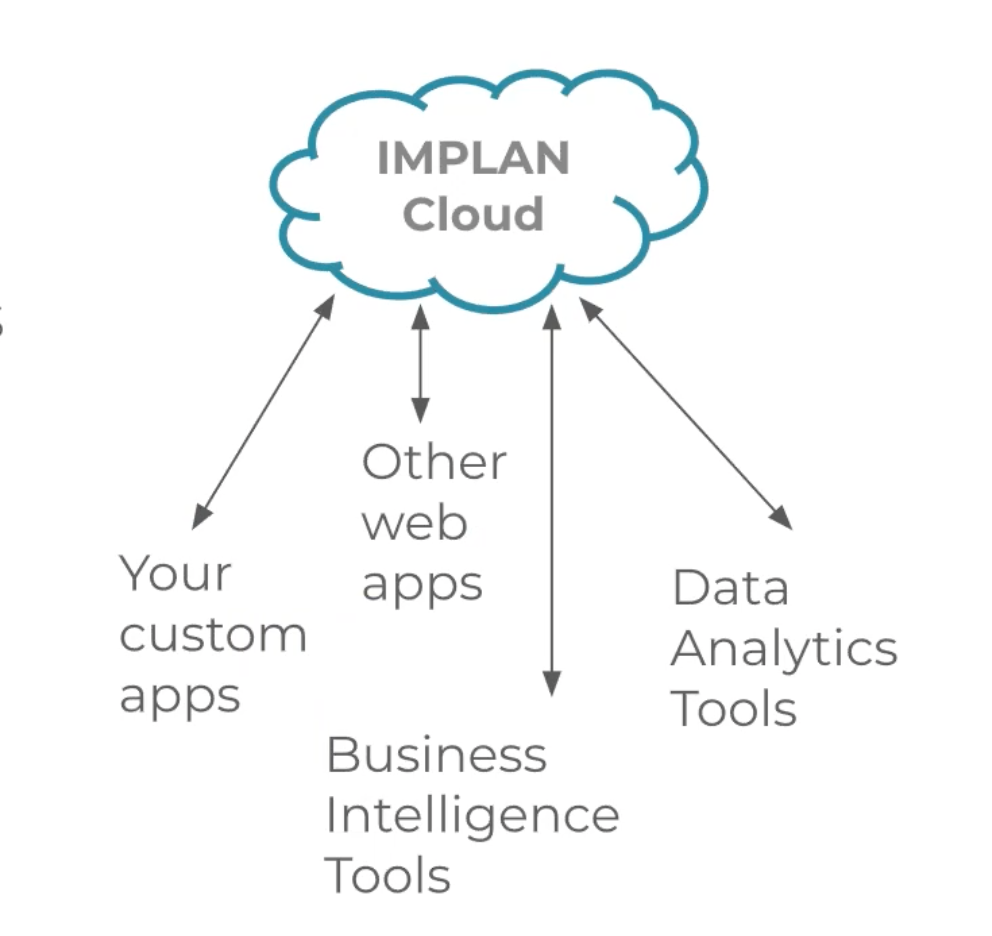IMPLAN Cloud makes it possible for anyone, even beginners, to conduct economic impact analysis – just ask Livian Mai, the Wingate University marketing major who recently became a published economics researcher.
IMPLAN in the Classroom: How a Wingate Undergrad Became a Published Economics Researcher
Did you know that the IMPLAN application programming interface (API) makes it possible for National Package subscribers to integrate IMPLAN Cloud with existing workflows and tools? With IMPLAN’s API, you can easily integrate IMPLAN Cloud impact analysis and data into any website, application, workflow, or visualization tool.
Topics: Economics, announcement, Impact
Influencing Legislation with IMPLAN Cloud: How the Pennsylvania Manufacturers’ Association Uses Economic Impact Analysis for Lobbying
As a driver of informed decision making, IMPLAN Cloud is used at all levels of government to drive policy changes and sound legislation. Many associations and organizations across the country use IMPLAN Cloud in their lobbying efforts. One such organization is the Pennsylvania Manufacturers’ Association (PMA), the lobbying efforts of which are headed up by Executive Director Carl A. Marrara.
Topics: Economics, Advocacy, Government
IMPLAN and Renewable Energy: Understanding Offshore Wind Tax Credits
As renewable energies take center stage in political policies and public consciousness, IMPLAN is here to help you measure each project’s economic impact. Our recent post Resource Roundup: IMPLAN and Solar Energy focused on giving you the information you need to study the economic impact of a solar energy project. Much of that same information can also be applied to wind power projects. In today’s blog, we’re taking a look at the Offshore Wind Tax Credit Program and how IMPLAN can help you understand the economic impact of wind energy projects, whether you’re a developer, a state authority, or an accounting service provider.
Topics: Economics, Funding, Environmental, Energy, "Taxes", Impact, Economic Development
As more and more people recognize the importance of protecting our planet, renewable energies like solar energy are taking center stage, transforming our environment as well as our economies.
Topics: Economics, Environmental, Energy, Economic Development
Uncovering Real Economic Insights from the 2020 Data
2020 was an unusual year for sure — the pandemic, the great resignation, working remote, and more. IMPLAN's 2020 data holds a tremendous amount of valuable economic intelligence.
Topics: Data, Economics, Technology, Coronavirus
It’s that time of year again. Here at IMPLAN, we mark the holiday season with our annual data release. That means 2020 data has arrived in the IMPLAN application!
Topics: Data, Economics, Technology
In early August 2021, the Infrastructure Investment and Jobs Act passed in the Senate. By the end of the month, the House of Representatives agreed on a September 27 deadline for voting on the bill, and given its bipartisan support, it is expected to pass there as well. This new bill focuses on investments in roads, railways, bridges, and broadband internet. It proposes $550 billion in new spending from 2022 to 2027, with the aim to improve sustainable transportation options, expand access to high-speed internet and clean drinking water, and upgrade our power infrastructure to facilitate the expansion of renewable energy.
These are exciting goals, backed by a lot of money. But what exactly will the economic impact of these investments look like? The ripple effect of this large amount of government spending can be expected to make a difference across the country, not just in the industries where it is initially spent, but also far beyond. We can get a clearer picture of the infrastructure bill’s impact on the economy through Input-Output Analysis performed by economists at IMPLAN Group, LLC, the leading provider of economic impact data and technology.
Topics: Data, Economics, Employment, Methodology, Impact, Government
What You Need to Know About Evolving Economy - COVID Q3-2020 Data
The world economy experienced drastic changes in 2020 as a direct result of the coronavirus pandemic. In order to address these drastic economic changes in our data, IMPLAN has released its second ever quarterly data set. The Evolving Economy - COVID Q3-2020 data captures the initial stages of the economic recovery in 2020. This data set, which is equipped to perform all forms of impact analysis modeling, is available now in the IMPLAN application.
Topics: Data, Economics, Employment, Methodology, Impact, Coronavirus, Disruption
Ask an Economist: FAQs for New Business Location Economic Impacts
Our webinar, The Economic Impact of a New Business Location, walked through the process for modeling the economic impact of a new business location. In the presentation, considerations for the construction and operations impacts were covered and examined in the context of the Lowe’s Design Center Tower project. If you missed the live presentation, you can watch the recording here. The discussion generated a number of questions highlighting important points about running these analyses. Check out what our economists had to say below:
Topics: Data, Economics, Employment, Methodology, "Taxes", Impact, Economic Development, Corporation, Government







.png)




.png?width=80&name=IMPLAN_Logo_Print-Vector_NEW%20(2).png) Copyright 2025
Copyright 2025